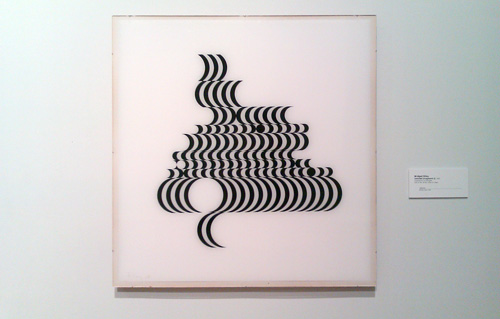I’ve been on a bit of a Bridget Riley kick lately. This happens every now and then. Something will start me thinking about Riley’s groundbreaking early op art work — how it completely dismantled the status quo in the early 60s — and how her work has steadily evolved over time. And so, I’ll check out books about Riley and read like a fiend, drawing inspiration with every turn of the page.
My most recent bout with Rileymania was sparked by my encounter with Fragment 2/10, part of Phoenix Art Museum’s permanent collection, shown below. (Yet another very good reason to visit Phoenix Art Museum!)

Bridget Riley’s Fragment 2/10, 1965, screenprint on Perspex.
In England, Riley’s work is back in focus in a big way. Next week (beginning November 24 and continuing through May 22, 2011), the National Gallery will showcase her newest paintings in Bridget Riley: Paintings and Related Work. For the past year, Bridget Riley: Flashback, a retrospective, has been touring England; the exhibition is on view at Southampton City Art Gallery through December 5. Her early fragment series showed at Karsten Schubert in London over the summer.
Likewise, a wealth of interviews with Riley are available online, thanks to BBC radio. A new Radio 4 production, Shimmer and Dazzle, Seeing What Bridget Riley Sees, previews the National Gallery exhibition (audio is online through November 23). Riley’s recollections in that piece overlap this interview with John Tusa. You can also catch these excerpts from a 1988 interview with Julian Spalding.
While I appreciate Riley’s work on many levels, I respect her art historical sensibility and uncompromising commitment to making work her own way. When early fame had unfortunate consequences, Riley regrouped and found a means to enable her work to evolve dynamically over time.